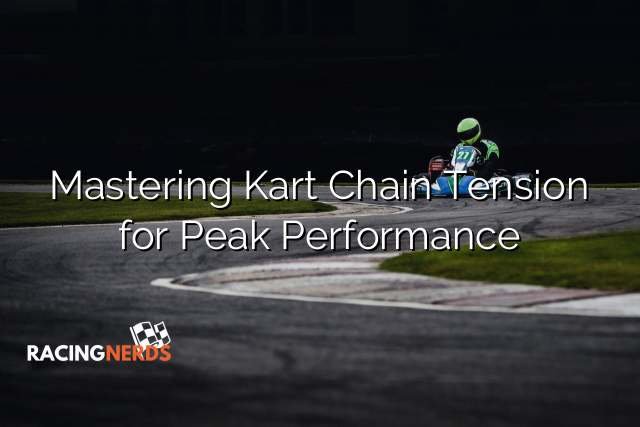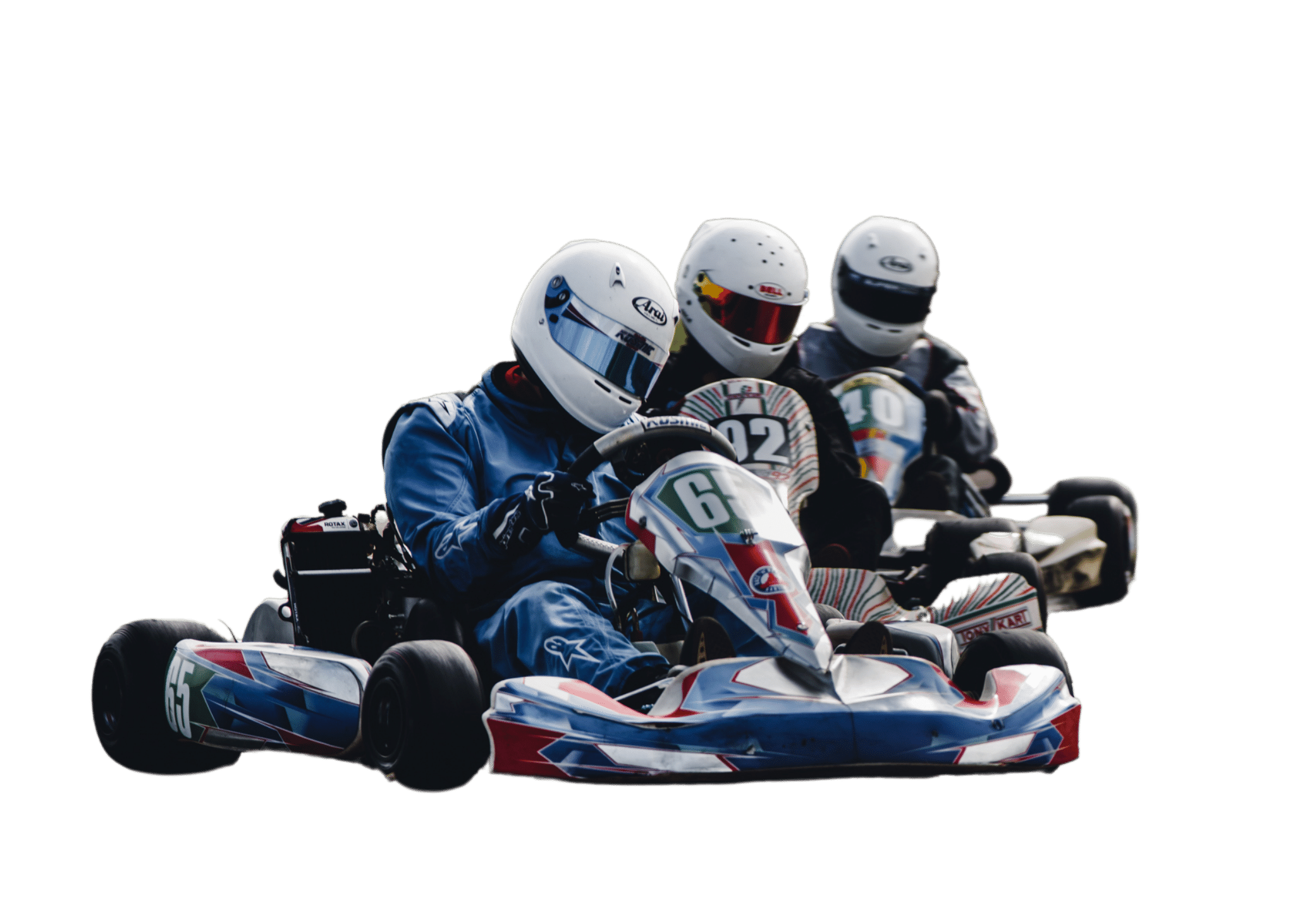
Did you know that improper chain tension is responsible for up to 70% of power loss in karting performance? You’re likely leaving valuable seconds on the track if you’re not paying close attention to this aspect of your kart’s setup.
The chain tension on your kart isn’t just about avoiding mechanical failures; it’s a critical component of your machine’s efficiency and your success on the track. As you prepare to navigate the complexities of chain tension, you’ll find that there’s a fine line between too tight and too loose. You’ll want to strike the perfect balance to transmit power effectively from the engine to the wheels.
Keep your eyes peeled for the signs that it’s time for an adjustment or a full replacement, and get ready to gain a deeper understanding of how this subtle art can give you the edge over your competitors.
Grasping the concept of chain tension is crucial, as it’s a fine balance that directly impacts your kart’s performance and safety on the track.
When you’re immersed in chain tension troubleshooting, you’re looking to avoid common chain tension mistakes such as setting the tension too tight or too loose. An overly tight chain can generate excessive friction, hindering wheel rotation and sapping your kart’s efficiency. Conversely, a slack chain risks disengagement, causing a sudden loss of drive and potentially leading to dangerous situations.
You’ll want to achieve just enough play—typically around an inch—to ensure optimal transfer of power without straining the components. Remember, precision in adjustment is paramount; even minor deviations can lead to significant performance deficits or equipment failure.
To achieve optimal tension in your kart’s chain, you’ll need to meticulously adjust the engine mount position, ensuring that the chain exhibits about an inch of play for peak performance.
Grasping the importance of chain tension in kart racing is crucial; it directly influences your vehicle’s power delivery and overall efficiency. A common mistake is over-tightening, which elevates friction and hampers wheel rotation. Conversely, a too-loose chain risks derailment and inconsistent power transmission.
Precisely calibrate the tension by incrementally repositioning the engine mount. After adjustments, verify the mid-point slack doesn’t sag excessively, indicating a lax chain, nor should it resist simple lateral deflection, a sign of undue tightness.
This balance is pivotal—negligent practices here will inevitably compromise your kart’s competitive edge.
Having established the significance of maintaining optimal chain tension, let’s now explore the step-by-step process to ensure your kart’s chain is correctly tensioned for maximum performance.
The importance of proper chain tension can’t be understated, as it directly impacts the drivetrain’s reliability and the kart’s speed. Overcoming chain tensioning challenges requires precision:
Adjust your kart’s chain length meticulously to ensure optimal tension and preserve the integrity of the drive system. Accuracy in chain length measurement is critical; it determines the baseline for effective chain tension troubleshooting. Too short, and you’ll strain the components; too long, and you risk derailment under power.
| Step | Tool Required | Purpose |
|---|---|---|
| Measure Chain Length | Chain Tool, Ruler | Determine if adjustment needed |
| Remove/Add Links | Chain Breaker | Adjust chain to correct length |
| Test Chain Tension | Manual Inspection | Ensure proper play and fit |
| Finalize Adjustment | Torque Wrench | Secure engine mount position |
Employ precision tools and analytical rigor when adjusting; a meticulous approach prevents premature wear and ensures your kart performs at its peak.
When adding or removing links from your kart’s chain, first ensure the vehicle is securely stabilized to prevent any movement during the procedure. Managing chain link compatibility and utilizing the correct tools for chain adjustment are critical steps to maintain your kart’s performance.
Here’s a concise guide:
Feel the satisfaction of a perfectly tensioned chain as you outpace the competition, knowing your hands-on effort directly contributed to a flawless ride.
After mastering link addition and removal, ensure your kart maintains peak efficiency by routinely inspecting and servicing the chain. Proper chain lubrication is critical; it minimizes friction and wear, ensuring smoother engagement with sprockets.
The frequency of maintenance depends on the usage intensity but should occur at least before every race session. Analyze the chain for stiffness, corrosion, or excessive wear, and apply lubricant meticulously to each joint and pin. This precision approach will extend the life of both the chain and the sprocket, while optimizing your kart’s power transfer.
Always verify that the applied tension aligns with the guidelines, as even the best-maintained chain can underperform if tensioned incorrectly.
Regular, methodical maintenance is the key to sustaining peak performance on the track.
You’ll need to inspect your kart’s chain regularly for signs of wear, such as stretched links, damaged rollers, or compromised integrity of the chain’s structure, to ensure optimal performance. Identifying common issues is crucial for maintaining your kart’s competitiveness.
Use these troubleshooting techniques to catch problems early:
Stay vigilant with these checks to keep your kart in race-winning condition.
Recognizing wear and tear on your kart’s chain is essential. Upon identification of stretched links or damaged rollers, it’s time to consider sprocket and chain replacement for uninterrupted performance.
Ensure sprocket alignment is precise. Misalignment accelerates wear and undermines efficiency. When installing a new chain, meticulous attention to sprocket positioning is crucial. Correct alignment minimizes lateral stress on the chain, promoting longevity and consistent power transfer.
Regular chain lubrication is non-negotiable to maintain peak mechanical synergy. Optimal lubrication reduces friction, extends the lifespan of both sprocket and chain, and enhances overall kart dynamics.
Analyze every component’s condition during replacement to guarantee that your kart operates at its highest potential. Remember, precision in installation and maintenance is the key to superior kart performance.
Temperature changes affect your kart’s chain tension due to thermal expansion and material flexibility. In cold, it contracts; heat makes it expand. Adjust accordingly to maintain optimal tension and avert performance issues.
Yes, incorrect chain tension can cause a ripple effect, creating unnecessary axle stress and accelerating component wear. You’ll want to inspect for misalignment, ensuring peak alignment to avoid these sneaky pitfalls.
You must monitor chain tension; neglect can lead to sprocket wear, inadequate chain lubrication, and potential hazards like derailment during races, jeopardizing your safety and others’ on the track.
Track surfaces dictate tension nuances; on dirt, you’ll need a slightly looser chain for flexibility, while asphalt requires a firmer setting to handle high speeds and maintain grip without excess wear.
You’ll find a chain wear gauge and tension meter indispensable for precise pre-race setups to ensure your kart’s chain tension is optimal, avoiding performance loss or potential equipment damage.
You’ve measured, adjusted, and fine-tuned—now your kart’s chain boasts the perfect tension. Feel the engine’s hum match your heartbeat; each turn reflects your meticulous care.
As you glide through corners, trust in the precision you’ve crafted. With every lap, your kart is a testament to your skill, its chain a chorus of seamless motion.
Maintain, monitor, and master—victory awaits with every race, every rev, every relentless pursuit of peak performance.

